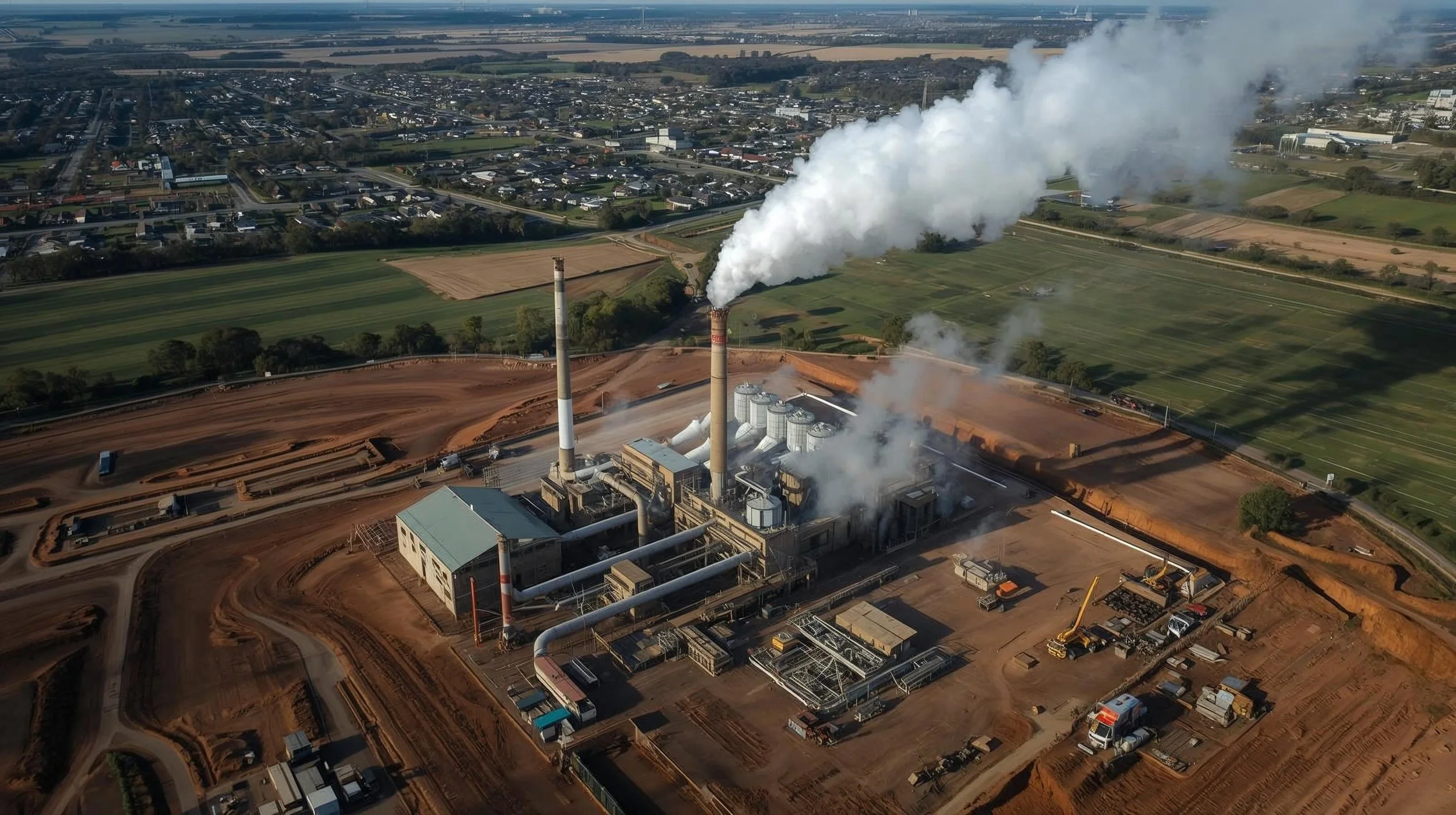waste Incinerators are not a clean-energy project
They are a pollution factory in disguise.
Below are the facts from peer-reviewed research, environmental groups, and state planning documents.
We’ve heard the phrase “waste-to-energy” used to make this project sound clean and modern — but the truth is more complicated.
Below, you’ll find the independent data and science behind why incinerators are being rejected in other states and countries — and why Sunbury and Bulla are not the right place for one.
The research we’ve seen
How Waste Incineration Works and Why It’s a Problem
Waste incineration works by burning household and industrial rubbish at high temperatures to create steam and electricity.
It sounds efficient — until you realise that burning plastic and mixed waste:
releases large amounts of CO₂ and toxic gases,
leaves behind hazardous ash that still needs disposal, and
destroys recyclable materials we should be reusing instead.
In short, it doesn’t make waste disappear — it just changes what form the pollution takes.
Even with filters, incinerators release a complex mix of pollutants. These include:
Fine particles (PM₂.₅ & PM₁₀): tiny enough to enter the lungs and bloodstream, linked to asthma and heart disease.
Nitrogen oxides (NOₓ): irritate airways and contribute to smog.
Dioxins and furans: persistent organic pollutants that can build up in soil, plants, and animals.
PFAS (“forever chemicals”): newly detected in incinerator smoke and ash, which survive high temperatures.
A 2023 study in Environmental Science & Technology found PFAS in flue gas at 4–5.6 ng/m³, proving these chemicals are not fully destroyed.
Air Pollution:
What Comes Out of the Stack
Burning plastic doesn’t make it disappear — it just makes it smaller.
The Journal of Hazardous Materials (2024) found that every tonne of waste burned can release between 360 and 102,000 microplastic particles into ash and emissions.
These microscopic plastics are light enough to travel through the air, settle in soil, and eventually make their way into waterways — including Emu Creek and Deep Creek, home to platypus populations.
Microplastics: The Invisible Waste Left Behind
For every four truckloads of waste burned, one truckload of toxic ash remains.
That ash contains heavy metals (lead, cadmium, mercury), microplastics, and acidic compounds that must be safely stored or buried.
Many countries now classify this ash as hazardous waste — meaning it can’t go to regular landfills.
In Victoria, this material would likely be trucked long distances for special disposal, increasing the risk of spills and contamination or even worse, dumped right on site in Sunbury near our homes and communites.
The Ash Problem:
What Happens After the Burn
Climate Impact:
The Dirtiest Energy Source on the Grid
Waste incineration is often branded as “green energy”, but the numbers tell a different story:
Produces around 1,707 grams of CO₂e per kilowatt-hour — higher than coal, oil, or gas.
Emits 2–5 times more carbon than energy from solar or wind.
Undermines Victoria’s net-zero goals by locking us into decades of emissions.
When we burn materials that could be recycled or composted, we’re literally throwing away both energy and opportunity.
Local Impacts:
What It Means for Sunbury & Bulla
Traffic & Noise:
Hundreds of additional truck trips every day will move waste and ash through Sunbury’s roads, adding diesel fumes, noise, and wear-and-tear.
Water Use:
The facility would consume around 180,000 litres of drinking water every day, even during droughts, the same amount used by over 1,000 households.
Property Values:
Large industrial projects near homes often lead to lower property desirability and slower value growth, especially when associated with air quality risks.
Community Fairness:
Hume produces only a fraction of the waste the plant would burn, the rest would be imported from other parts of Victoria.
This isn’t an abstract issue, it directly affects our community.
What Other Governments Have Already Decided
NSW (2022)
Banned new incinerators near communities due to Health and environmental risks deemed unacceptable
Scotland (2022)
Moratorium on new plants, prioritising zero-waste and circular economy
Europe (2023)
Tightened emission laws, phasing out older facilities due to Pollution, PFAS, and CO₂ emissions
These governments looked at the same evidence now facing Sunbury — and chose safer, cleaner alternatives.
you can be a part in stopping this being built and protect our community
FAQs
-
Not really. You’re swapping one form of pollution for another. Airborne pollutants and toxic ash don’t disappear — they just move.
-
Even the most advanced filters can’t stop PFAS, microplastics, or ultra-fine particles.
-
No. Most of what’s burned is plastic — made from fossil fuels. Burning it releases the same carbon we’re trying to reduce.
-
Incinerators are highly automated. Recycling and composting create 5–10 times more jobs.
For further reading and resources check out our references page
Contact us
Interested in working together? Fill out some info and we will be in touch shortly. We can’t wait to hear from you!





